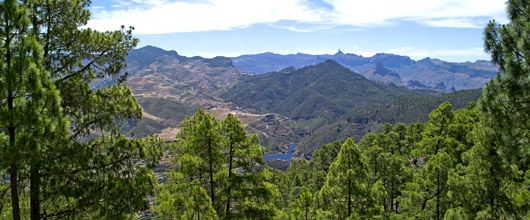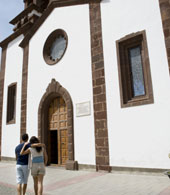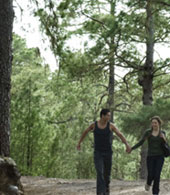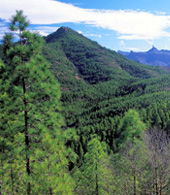The municipal village of Artenara is also situated in the mountainous central area of the island of Gran Canaria, 50 kilometres from the capital and 1,270 metres above sea- level.
Although the municipality of Artenara lies primarily in the interior of the island, part of its territory reaches the coast, which is surrounded by large extensions of canarian pine woods in the areas of Tamadaba and Tirma. These have become the best preserved natural areas of Gran Canaria.

Artenara is an ideal place to appreciate the archaeological sites which show the way of life of the Canarian aborigines. The Archaeological Complex of Acusa (house caves), declared Place of Cultural Interest, can be accessed by car.
A visit to the Hermitage of the Virgin de La Cuevita is another of the traditional visits, since this hermitage was built into a cliff. It is situated 400 metres above the village. Public opening times: from 10:00 to 19:00 hours. The Church of San Matías, from the XIX century, is the place of the present day Parish of Artenara.



In the House Museum of Santiago Aranda, Gran Canarian writer and philosopher, is situated the Tourist Information Office of the municipality. Public opening times: Mondays to Fridays from 11:30 to 16:30 hours. A stopping visit to the Mirador of Unamuno, with a sculpture of the famous writer and philosopher (which commemorates the stay of Unamuno on the island in 1910) and the spectacular views, are also worth a visit. In what concerns historical and religious monuments, one must also mention the Hermitage of La Candelaria, in Acusa. It possesses a group of sculptured images of great value.